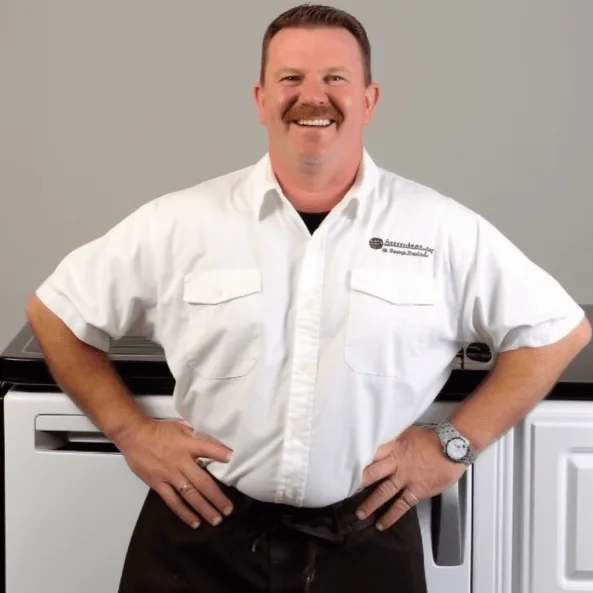Have you ever jumped into the shower only to be greeted by a blast of cold water? If your hot water heater’s bottom element isn’t working, that chilly surprise can become all too familiar. This issue can leave you frustrated and wondering what went wrong.
Key Takeaways
- Symptoms of Malfunction: Common signs that your hot water heater’s bottom element is failing include inconsistent water temperature and odd noises such as popping or rumbling.
- Causes of Failure: The bottom element may not work due to electrical problems, sediment buildup, or aging components.
- Troubleshooting Steps: Prioritize safety, check power supply, test with a multimeter, inspect for sediment, evaluate wiring, and test or replace the thermostat as necessary.
- When to Seek Professional Help: Contact a technician if issues persist, especially if encountering frequent repairs, significant electrical problems, or your unit is over 15 years old.
- Repair vs. Replacement: Consider repairing minor issues in younger units, but evaluate replacement if repair costs are over 50% of a new unit, especially for older, inefficient heaters.
Common Symptoms of Hot Water Heater Issues
Recognizing issues with your hot water heater early can save you from further problems. Below are some common symptoms that indicate the bottom element may not be functioning correctly.
Identifying Temperature Problems
Temperature problems are a clear sign of a malfunctioning hot water heater. If you notice inconsistent water temperatures, such as lukewarm water during a shower, the bottom element may not be heating properly. This could result in lukewarm water for extended periods, especially during peak usage times. Testing water temperature at different taps can help pinpoint the issue. If every tap turns up cold or warm water persists, the bottom element likely requires attention.





Recognizing Odd Noises
Odd noises from your hot water heater can indicate trouble. You might hear popping, rumbling, or hissing sounds. These noises often result from sediment buildup around the heating element or a failing component. If you encounter these sounds, flushing your tank might help clear the sediment. However, persistent noises can suggest that the bottom element isn’t functioning as it should, necessitating further inspection or repair.
Possible Causes of Bottom Element Failure
Several factors can contribute to the bottom element of your hot water heater not functioning properly. Understanding these causes helps determine the necessary repairs.
Electrical Issues
Electrical problems often disrupt the function of the bottom element. Check the circuit breaker; a tripped breaker might indicate an electrical overload. Ensure that the wiring connections are secure and free from damage. You might need to replace a blown fuse or faulty thermostat, which can prevent the element from receiving power.
Sediment Buildup
Sediment buildup in the tank can impact heating efficiency. Over time, minerals from hard water settle at the bottom of the tank. This buildup creates a barrier between the burner and the water, causing inefficient heating. Regular flushing of the tank helps eliminate this sediment and maintain optimal performance. Consider flushing the tank annually to prevent future issues.
Age and Wear of the Heater
Aging hot water heaters often experience component wear, decreasing their effectiveness. Most electric water heaters last between 10 to 15 years. If yours is approaching or exceeding this age, the bottom element may be worn out or damaged. Replacement of the element may be necessary. Inspect the unit regularly for signs of rust or corrosion, indicating the need for an upgrade.





Troubleshooting the Bottom Element
Troubleshooting the bottom element of your hot water heater can restore your hot water supply. Follow this guide to identify the issue and take appropriate action.
Safety Precautions
Before starting any troubleshooting, prioritize safety. Turn off the power supply to the hot water heater at the circuit breaker. Allow the tank to cool down if it’s been in use. Always wear safety goggles and gloves to protect yourself from potential hazards, like electrical shocks or hot surfaces.
Tools Needed for Inspection
Gather the following tools to facilitate your inspection:
- Multimeter: For testing electrical continuity.
- Screwdriver: For removing access panels.
- Bucket: To catch any residual water.
- Towels: For cleanup and drying wet areas.
- Flashlight: To inspect dimly lit areas.
Having these tools handy makes the troubleshooting process smoother.
- Check the Power Supply: Inspect the circuit breaker. If tripped, reset it and test the element again.
- Test the Multimeter: Set the multimeter to resistance (ohms). Disconnect the bottom element’s wires, and test between the terminals. A reading of 10-30 ohms indicates a functioning element.
- Inspect for Sediment Buildup: Open the drain valve at the bottom of the tank and let out some water. Look for sediment. If present, flush the tank until the water runs clear.
- Evaluate Wiring Connections: Examine the wires connected to the bottom element. Look for corrosion or loose connections. Tighten connections or replace damaged wires.
- Test the Thermostat: The thermostat controls the element. Remove and test it with the multimeter. If it’s faulty, replace it.
- Replace the Element if Necessary: If the element tests faulty, replace it. Drain the tank, disconnect the old element, and install a new one, ensuring proper seal and connection.
Following these steps helps you diagnose the issue effectively. If problems persist, consult a professional for further assistance.





When to Call a Professional
Recognizing when to consult a professional can save time and money in addressing hot water heater issues. Consider these factors to determine if expert help is necessary.
Signs You Need Expert Help
- Persistent Hot Water Issues: If you experience continuous cold or lukewarm water after troubleshooting, a professional can diagnose deeper issues.
- Electrical Problems: If you’re unfamiliar with electrical systems, tripped breakers or faulty wiring can pose safety risks. Professionals can address electrical components securely.
- Frequent Repairs: If repairs happen frequently, replacing the unit may be more cost-effective than ongoing fixes. An expert can recommend the best course of action.
- Age of Heater: Heaters over 15 years old often need full replacement. A technician can assess whether continued use makes sense.
- Unusual Noises: Noise like banging or hissing often indicates serious issues that require professional evaluation for potential damage.
- Repair: Repairing a hot water heater usually involves fixing specific components, like the bottom element or thermostat. This option suits minor issues and younger units.
- Replacement: Replacement becomes crucial when the unit is old, inefficient, or has multiple failing components. New heaters offer energy efficiency and advanced features, often saving on utilities long-term.
- Cost Consideration: Weigh the repair costs against replacement expenses. If repair costs exceed 50% of a new unit’s price, replacement is often wiser.
- Consultation: Engaging a professional for an honest assessment can clarify whether repairs or a replacement make sense for your situation.
Conclusion
Dealing with a hot water heater’s bottom element can be frustrating but you don’t have to face it alone. By recognizing the signs early and following the troubleshooting steps outlined, you can often resolve the issue without too much hassle. Remember to prioritize safety and don’t hesitate to reach out for professional help if needed.
Whether you choose to repair or replace your unit, staying informed about your hot water heater’s condition will help you make the best decision for your home. Keeping your water heater in good shape ensures you can enjoy hot showers and all the comforts of home without interruption.
Frequently Asked Questions
What causes cold water during showers?
Cold water during showers is often caused by a malfunctioning bottom element in a hot water heater. Other symptoms may include inconsistent temperatures and unusual noises, indicating potential issues with the heater.
How can I tell if my hot water heater is failing?
Signs of a failing hot water heater include lukewarm water temperature, unusual noises like popping or rumbling, and rust or corrosion. Regular testing of water temperature and noise monitoring can help identify problems early.
What should I do if my hot water heater is not working?
Start by checking the power supply and testing the bottom element with a multimeter. Inspect for sediment buildup and evaluate connections. If these steps don’t resolve the issue, consult a professional for further assistance.
When should I call a professional for hot water heater issues?
You should call a professional if you experience persistent hot water problems, frequent repairs, or if your heater is over 10-15 years old. Unusual noises and electrical issues are also strong indicators for expert evaluation.
Is it better to repair or replace a hot water heater?
If repair costs exceed 50% of a new unit’s price, replacement is typically the better option. Minor issues in younger units can often be repaired, while older units with several problems may require replacement for better efficiency.

Hey, I’m Jake. I focus on cooling systems at Appliance Mastery, like fridges, freezers, and air conditioners.
I’ve worked in appliance repair for more than ten years and I’m certified through NASTeC. I’ve seen just about every fridge issue you can imagine.
My goal is to help you fix problems without stress. Whether it’s a freezer that won’t cool or an AC that keeps beeping, I’m here to walk you through it.
